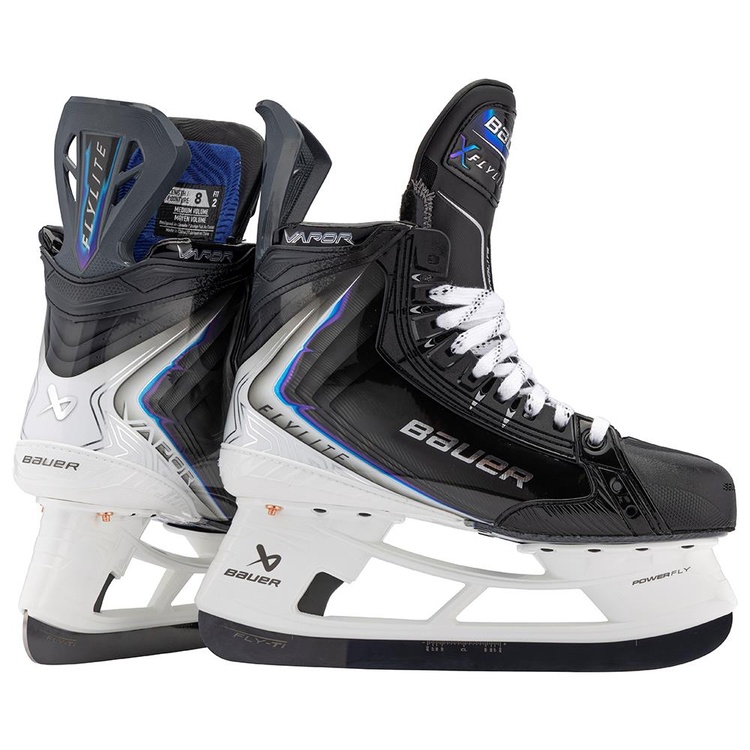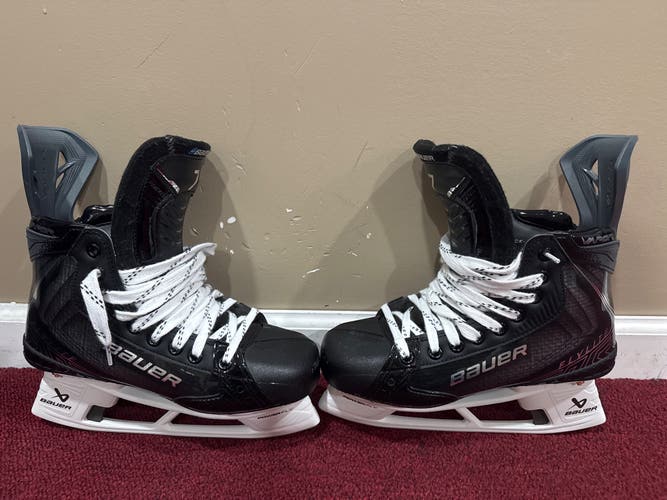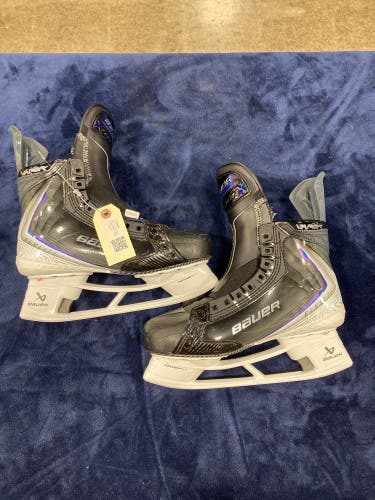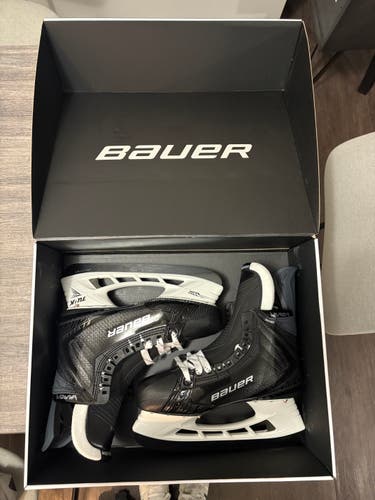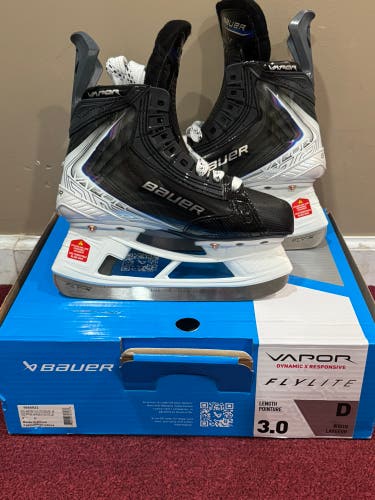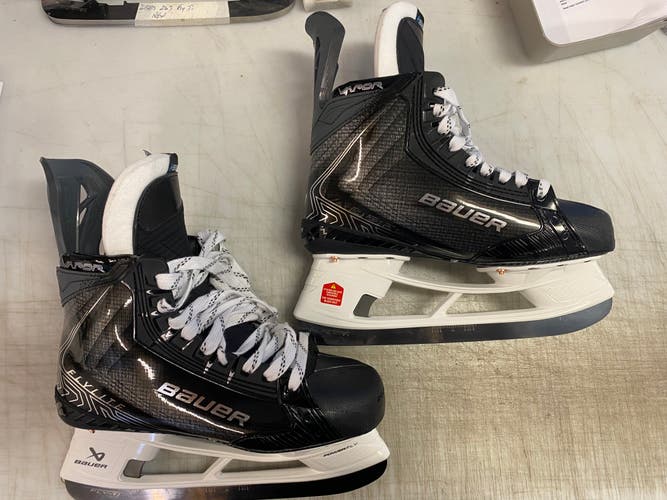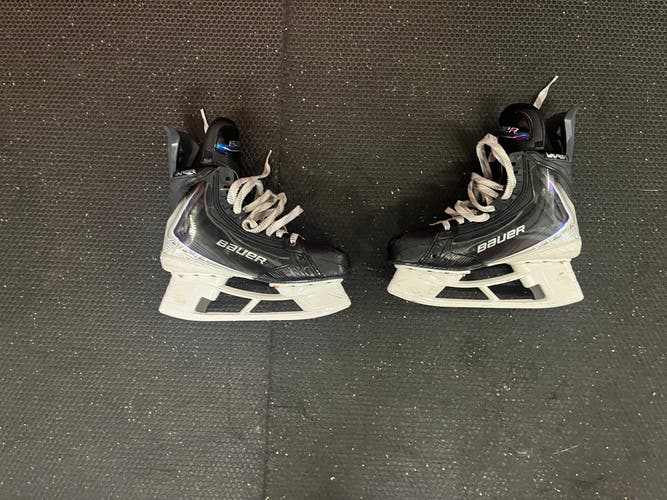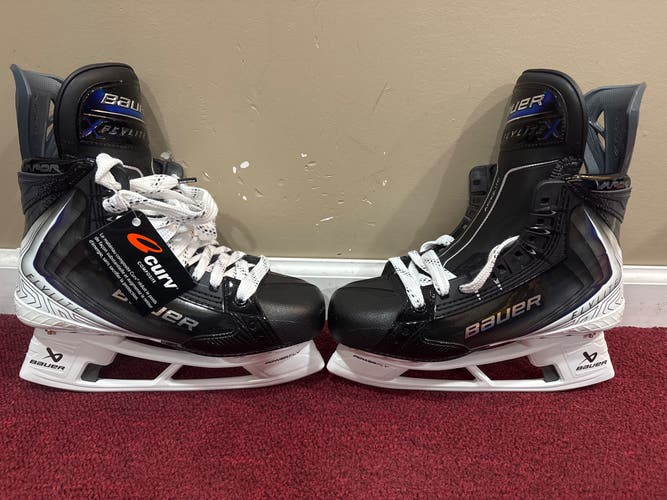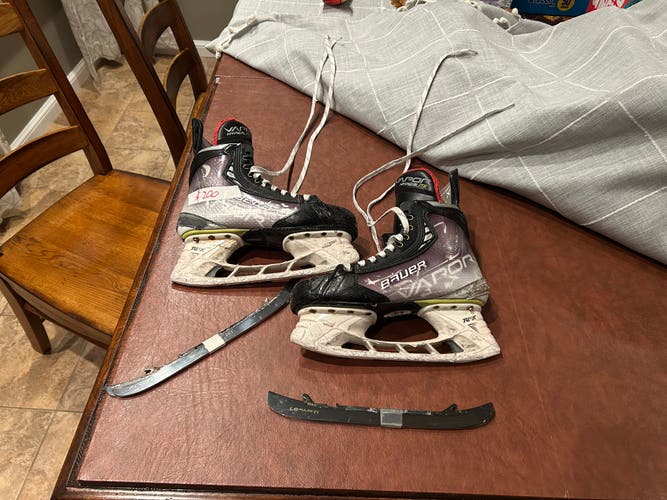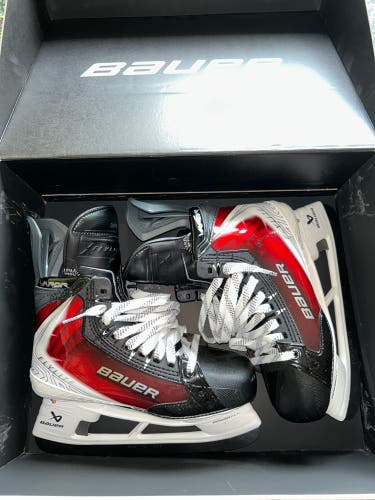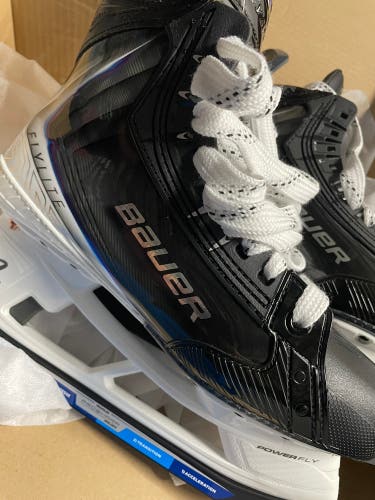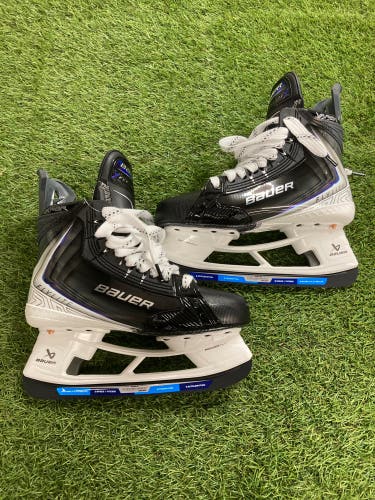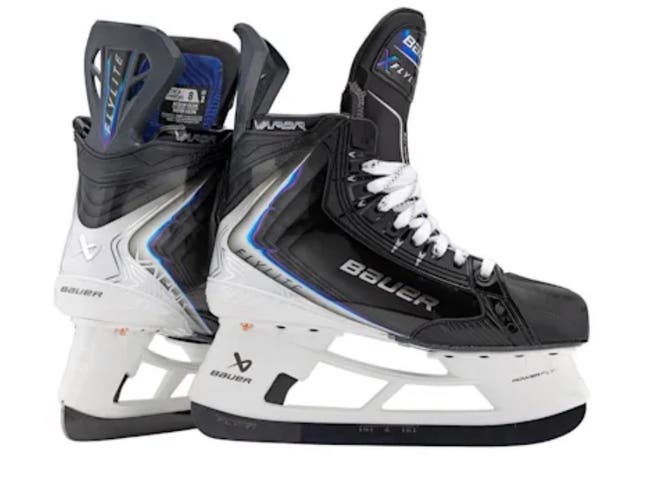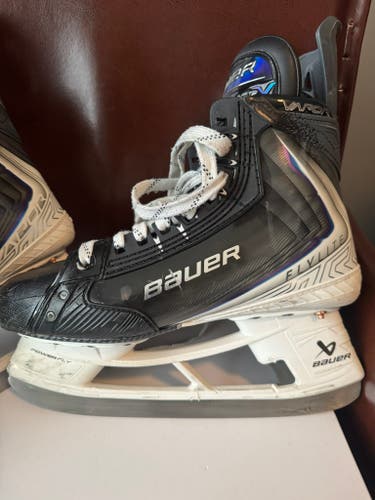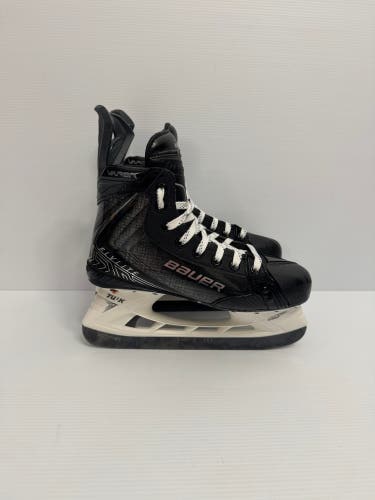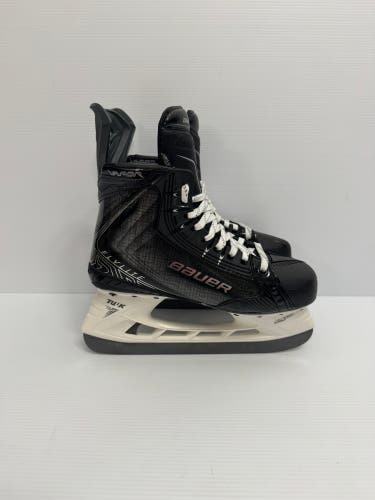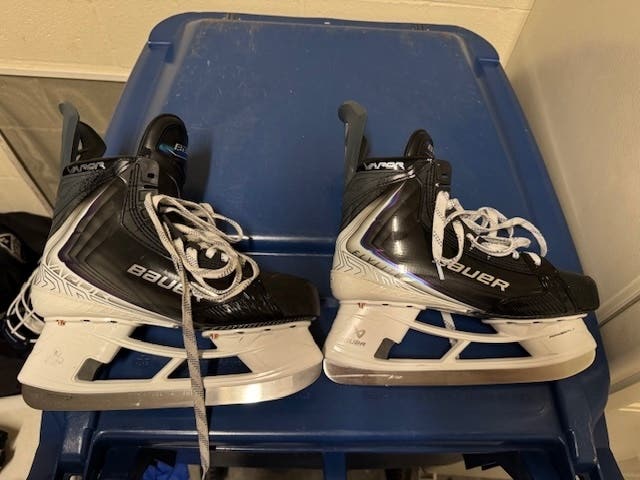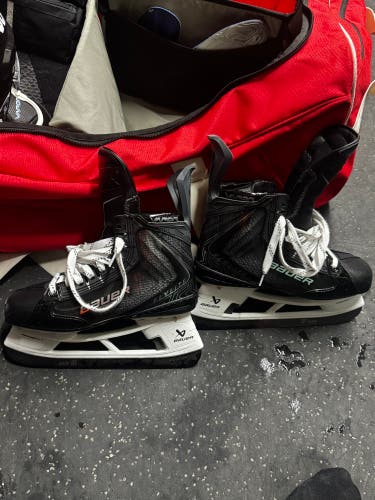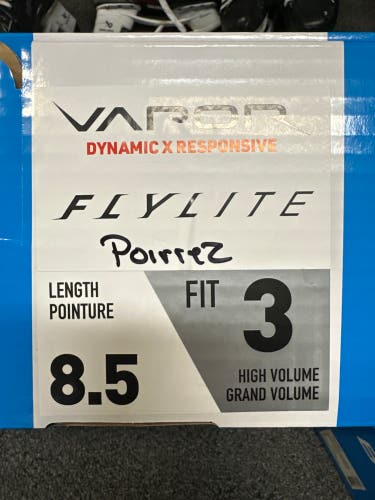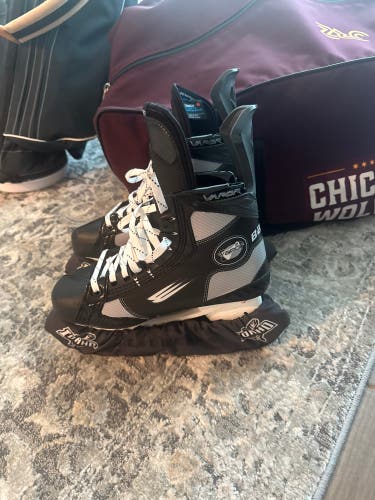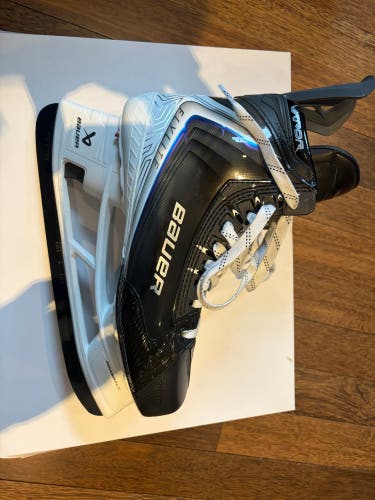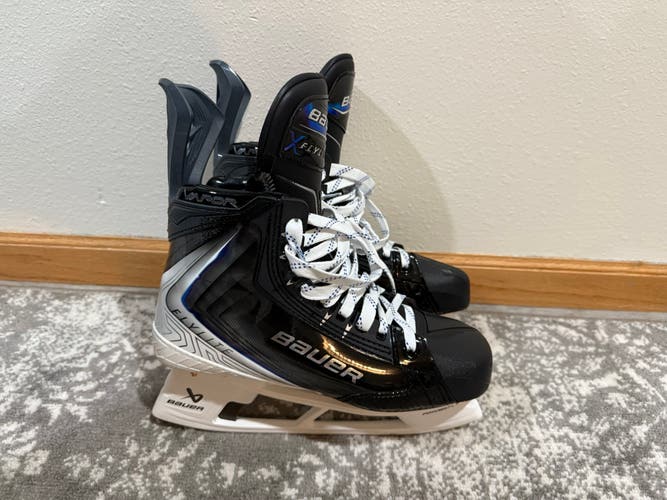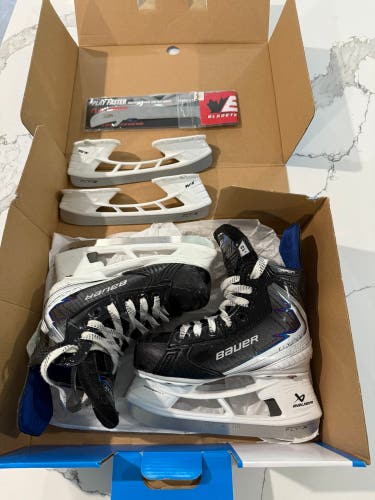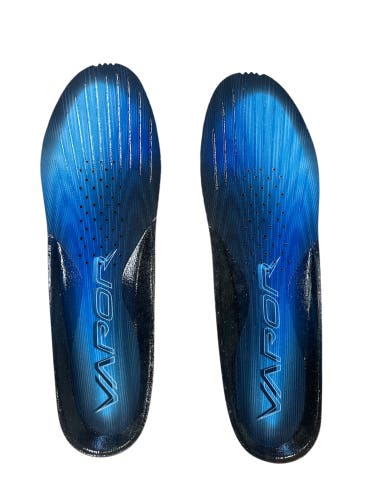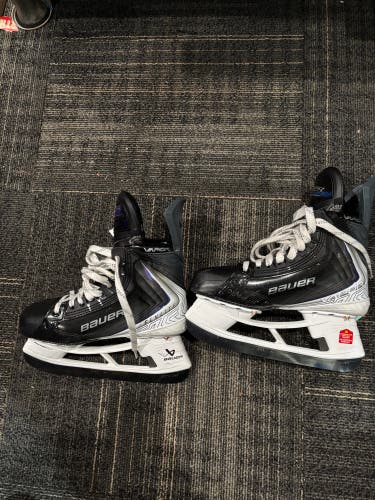FAQs: Bauer Vapor FlyLite Hockey Skates
Q: Who are Vapor FlyLite skates best for?
A: Players who want an ultra‑light, agile boot with a low‑volume Vapor fit. They favor quick cuts, fast edge transitions, and an aggressive forward skating stance. If you like a snug heel/forefoot and a responsive boot for quick starts and pivots, FlyLite works.
Q: How does the FlyLite fit vs Supreme or Nexus/four‑roll style skates?
A: Classic Vapor = tapered/low‑volume: snug heel and forefoot with a narrower midfoot. Compared to Supreme’s anatomical wrap (more “locked‑in” and power‑focused), FlyLite feels nimbler with freer ankle articulation. It’s notably less roomy than old Nexus‑style high‑volume boots.
Q: Are FlyLite skates true to size?
A: Most skaters land about a half size down from street shoes (typical Bauer). Because the boot is low‑volume, wide or high‑instep feet may feel pressure until after a proper bake. Use a Brannock/scan, pencil test for volume, and aim for ~5–8 mm toe space with firm heel lock.
Q: Do FlyLite skates bake well?
A: Yes—highly thermoformable. One good bake usually achieves most of the wrap; a second shop‑guided bake can fine‑tune hot spots. Bake wearing your game socks/insoles, sit in a skating stance, and don’t overtighten laces while cooling to preserve forward flex.
Q: What holder and steel do FlyLites use? Can I upgrade?
A: Most FlyLite builds ship with Tuuk Lightspeed EDGE quick‑release holders and stainless runners. Many skaters upgrade to premium steel (e.g., Step, Pulse, Pulse‑Ti) for edge retention. Keep steel pairs matched, note the factory profile, and seat runners fully in the holder.
Q: What’s the on‑ice feel—pitch and agility?
A: Vapor carries a slightly forward pitch that helps you get over your toes. The boot feels very light and lively with quick edge‑to‑edge response. It’s built more for agility and acceleration than a planted, power‑stride feel (that’s where Supreme excels).
Q: Any lace‑bite concerns on FlyLite?
A: Low‑volume boots can create instep pressure for high‑instep skaters—especially pre‑bake. Mitigate with a proper bake, moderate tension on the top eyelets, skip‑eyelet lacing if needed, or a small lace‑bite pad during break‑in. The stock tongue spreads pressure reasonably well.
Q: How stiff are FlyLites compared to newer Vapor HyperLite/HL2?
A: FlyLite is elite‑stiff for its era with very low weight. Many skaters describe HL/HL2 as incrementally more refined (comfort/liner/tongue), but FlyLite still feels extremely responsive. If you like a crisp, quick boot, FlyLite doesn’t feel dated on ice.
Q: Do FlyLites break in quickly?
A: Faster than older, heavier boots—especially after a bake. Most players feel dialed within 2–4 skates. Address any localized pressure with spot punches rather than cranking laces; over‑tightening can cause unnecessary lace‑bite and numbness.
Q: How does FlyLite compare to Supreme for power and stability?
A: Supreme generally feels more planted and “power‑stride” oriented with a fuller anatomical wrap. FlyLite trades some of that planted feel for quicker edge changes and acceleration. Choose Supreme if you want max stability under heavy loads; choose FlyLite for agility.
Q: Can I swap insoles or use orthotics?
A: Yes. Aftermarket footbeds (Superfeet/CCM Orthomove) or custom orthotics can improve arch support and heel hold. Bake with them installed. Watch stack height—if the foot sits too high, volume gets tight at eyelets; adjust lacing or consider a minor punch.
Q: Any durability notes—eyelets, tendon guard, or holder?
A: Eyelets and tendon guards hold up well if you avoid over‑torquing laces and dry skates fully. With EDGE holders, periodically check rivets and make sure steel is seated cleanly. Wipe the boot after skating; trapped moisture accelerates corrosion and liner wear.
Q: Common fixes if FlyLites feel “too forward” or “hooky” on turns?
A: Check your hollow (it may be too deep), verify the profile, and give yourself 1–2 skates to adjust to the boot’s pitch. If toes feel jammed, ensure the steel is fully seated, heel is locked, and you’re not over‑tightening the top three eyelets.
Q: What should I check when buying used FlyLite skates?
A: Inspect:
- Quarters/outsole: cracks, eyelet tearing, outsole separation
- Holder/rivets: looseness, bent posts; steel life remaining
- Liner: heel wear/pilling, odor/moisture damage
Break‑in and care quick tips
- Bake once, then skate 2–3 times before judging fit
- Don’t overtighten the top eyelets—let the tongue flex
- Dry fully (no heat), pull tongues open; check rivets monthly
- Record your profile/hollow once dialed to keep future sharpens consistent
